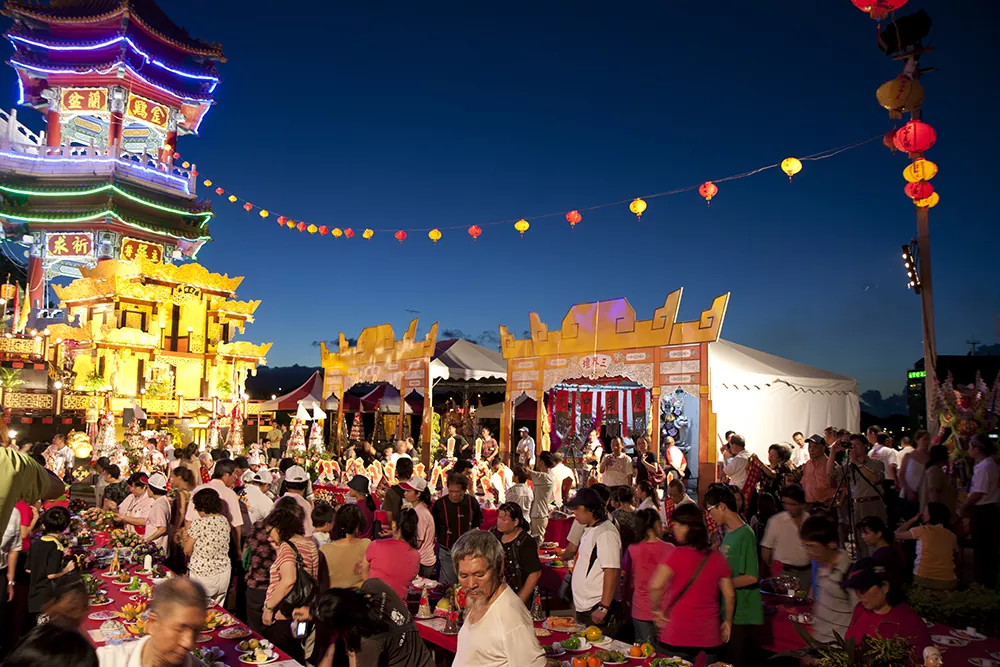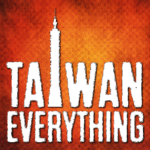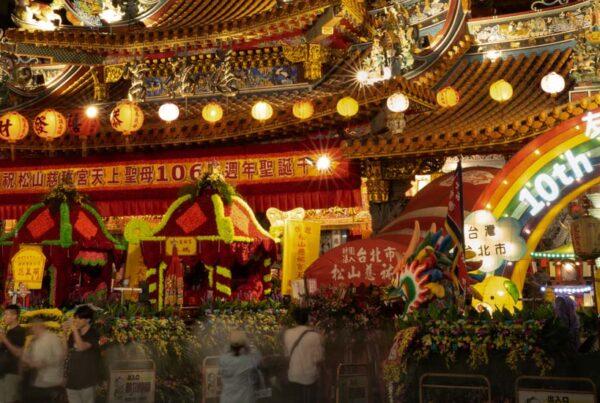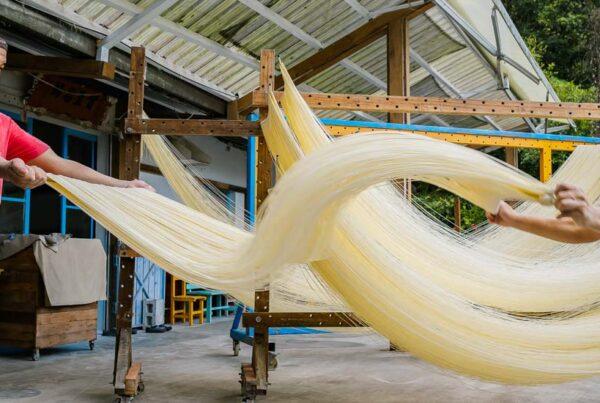During the Keelung Ghost Festival the Harbor City Hosts Some Unusual Guests
TEXT / MARK CALTONHILL
PHOTOS / MAGGIE SONG
***
The 7th lunar month is also known as Ghost Month, since according to popular belief the Gates of Hell are open the full month and spirits of the deceased are free to wander the Earth. Given the Han Chinese people’s complex help-and-be-helped relationship with their ancestors, this is not necessarily a bad thing. Except, that is, in the case of “hungry ghosts” (more commonly called “good brethren”), who do not have descendants making regular offerings and who might therefore cause trouble rather than offer help from the afterlife. Elaborate ceremonies and fabulous feasts are prepared to placate them.
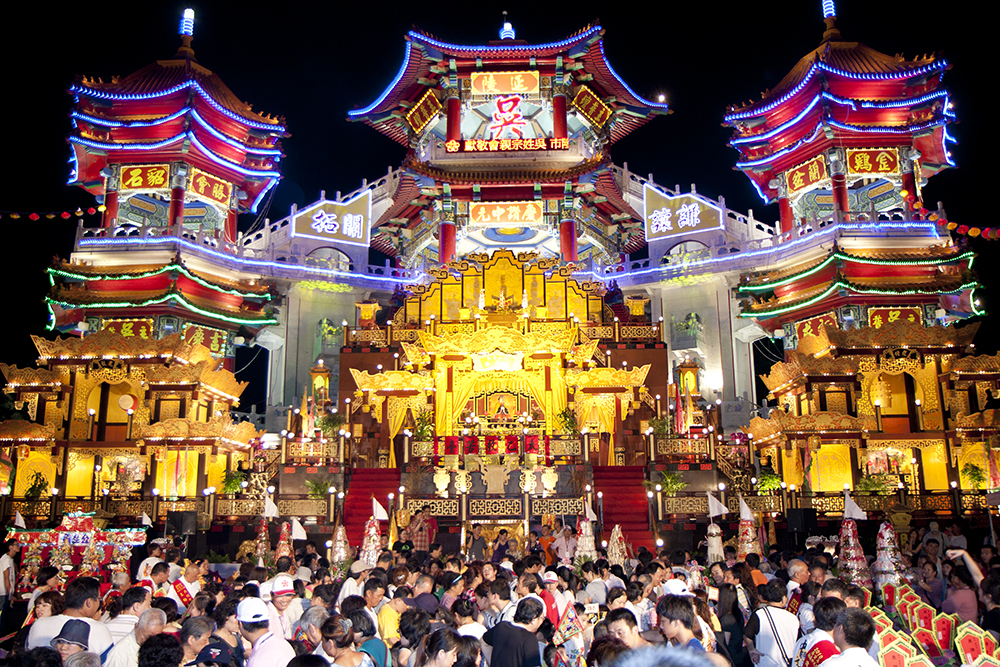
These celebrations are held all over Taiwan, but the largest and one of the most colorful takes place in Keelung, the Keelung Ghost Festival. It culminates at the small fishing port of Badouzi, where floating lanterns are launched onto the sea. Curiously, these lanterns are all decorated with a single Chinese character, such as 謝 (xie; “gratitude”), 林 (lin; “wood”), and 江 (jiang; “river”).
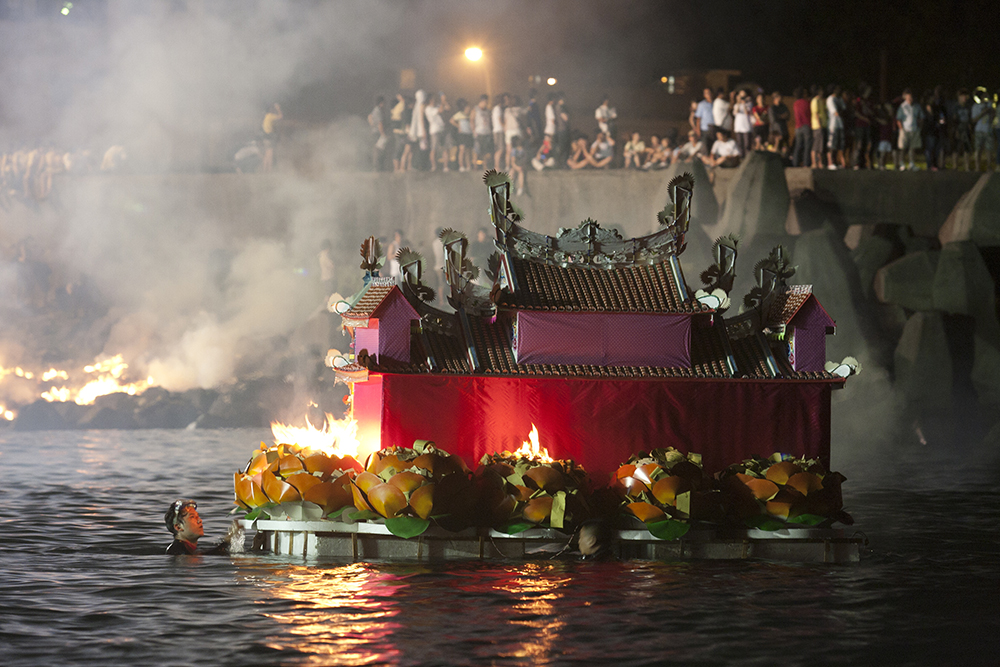
Origins of the Keelung Ghost Festival
The answer lies in the origins of the Keelung Ghost Festival. During its long period of colonization by Han Chinese, from the early 1600s well into the 1800s, Taiwan was a frontier territory in which following the rule of law was not always easy or desired, and armed clashes were not uncommon. These were not limited to conflicts with indigenous people, or between Hakka and Hoklo-speaking immigrants, but even occurred between members of the last group, almost all of whom hailed from either the Quanzhou or Zhangzhou regions of Fujian Province in mainland China. One particularly nasty clash in Keelung in 1851 led to around 100 deaths.
To heal social wounds and prevent future clashes, an annual ceremony honoring the dead was mutually devised that started in 1855. Rather than being based on hometown affiliations as was normal, it was organized according to clan names, since these were shared by families of both groups. This is the origin of the character on each lantern: Each is a family name that also has other meaning. It is believed that the farther a lantern floats out to sea, the better the luck to be enjoyed by that clan in the year to come.
Major Events During the Festival
The Keelung Ghost Festival starts on the first day with ritual ceremonies at the city’s four main temples: City God Temple, Qing’an Temple, Dianji Temple, and Juexiu Temple. This is followed by the official Gates of Hell opening ceremony at midnight the next night at Laodagong Temple (37, Lane 76, Le 1st Rd.) – said to contain the bones of some of those who died in 1851 – which is broadcast live on national television. It ends with the official closing ceremony.
Visitors to Keelung on any day of Ghost Month can catch sight of different clans taking turns to parade their lanterns through the streets, and there are international and domestic artistic and cultural events on the main plaza at the harborfront and in theaters, halls, government buildings, hotels, and on street-side stages throughout Keelung. These include dancing, Taiwanese opera, puppetry, drumming, martial arts, children’s shows, traditional and modern music, circus-style tricks, painting, photographic and art competitions, folk singing, quizzes, and calligraphy.
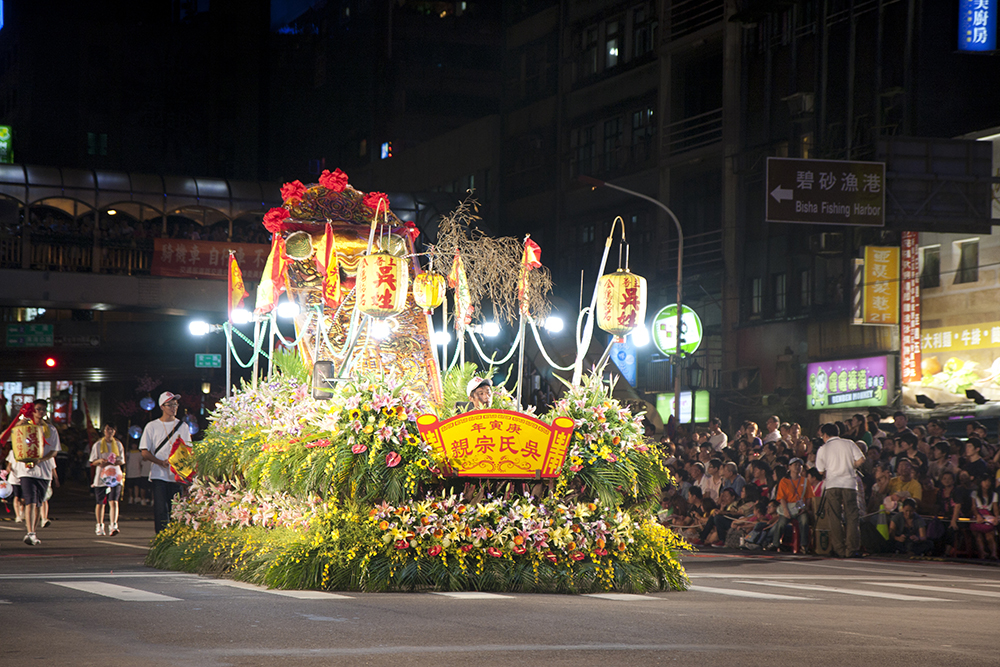
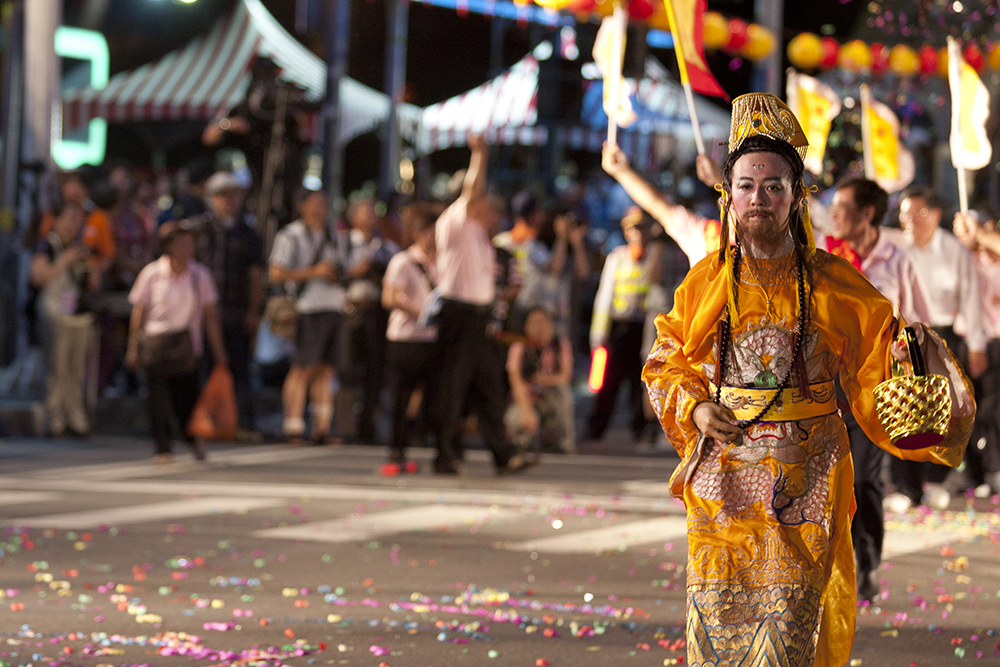
Street Parades
Without doubt, however, the highlight of the Keelung Ghost Festival is the full parade of decorated floats bearing the lanterns on the evening of the full moon. These are constructed in the shape of miniature mansions, and are taken through the streets of downtown Keelung, then out past the docks toward Badouzi a few kilometers away. Here they are again worshiped before being carried into the sea at midnight, where they float away silently until the paper walls catch fire, and the burnt-out shell sinks. Around midnight everyone sets off home, or back to downtown Keelung where the Miaokou Night Market, the city’s famous year-round tourist attraction, does good business until well into the small hours.
Keelung Night Market Food Tour from Taipei
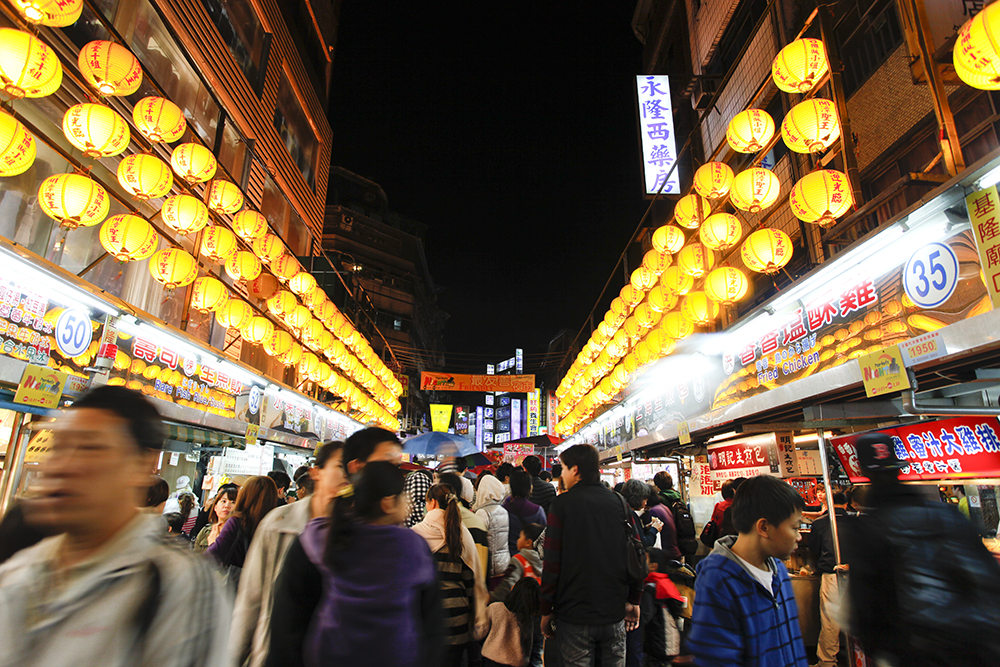
The day after the floating-lantern event, the hungry ghosts are to be fed a choice of vegetarian or meat dishes at Zhupu Altar – with, as mentioned, Western dishes included this year. Around 11pm, once they have finished eating, they will be encouraged to return to the underworld by the dancing of Zhongkui the “ghost catcher.” Living participants at the ceremony may then eat the ghosts’ leftovers.
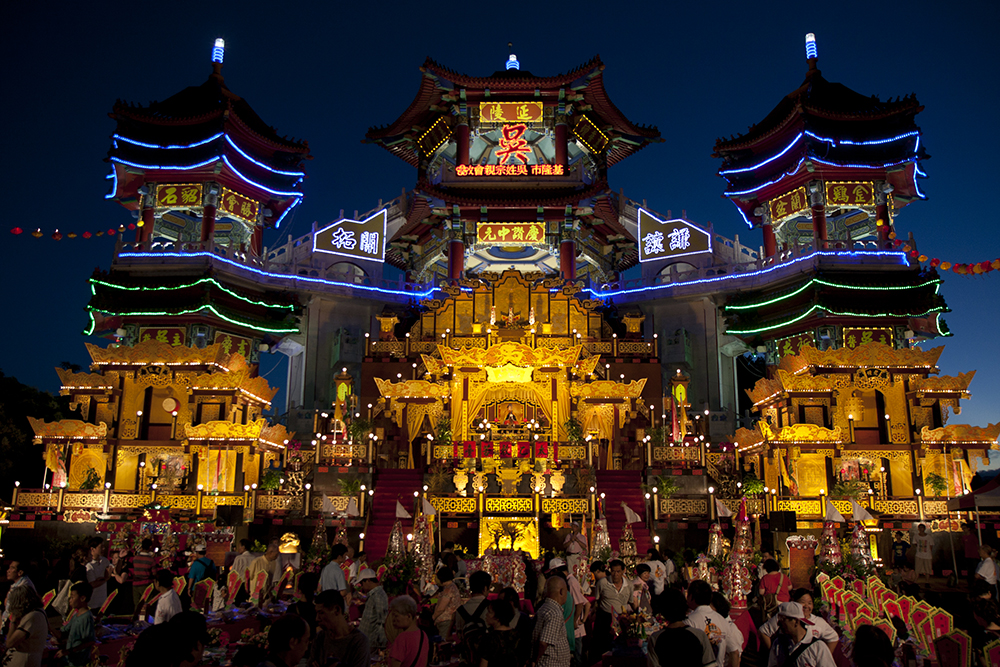
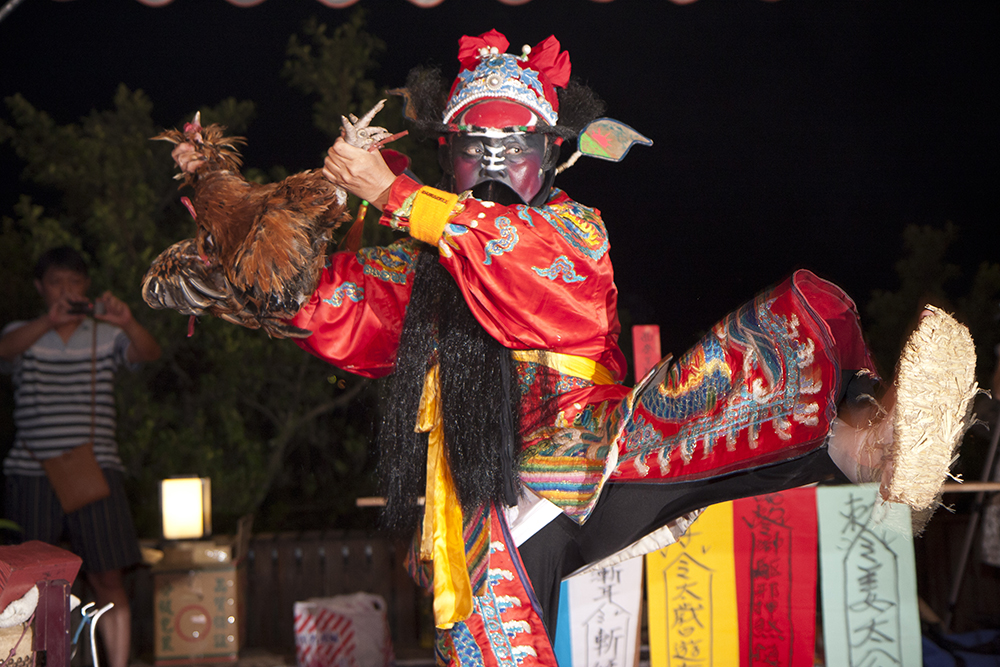
Documentary Project about the Keelung Ghost Festival
Other Keelung Attractions
Keelung’s other tourist attractions include fortifications dating back to the 19th century, such as Ershawan Fort, Baimiweng Fort, and Dawulun Fort to the west of town, and Gangziliao Fort to the east. Boat tours take visitors around the harbor and out around Keelung Islet.
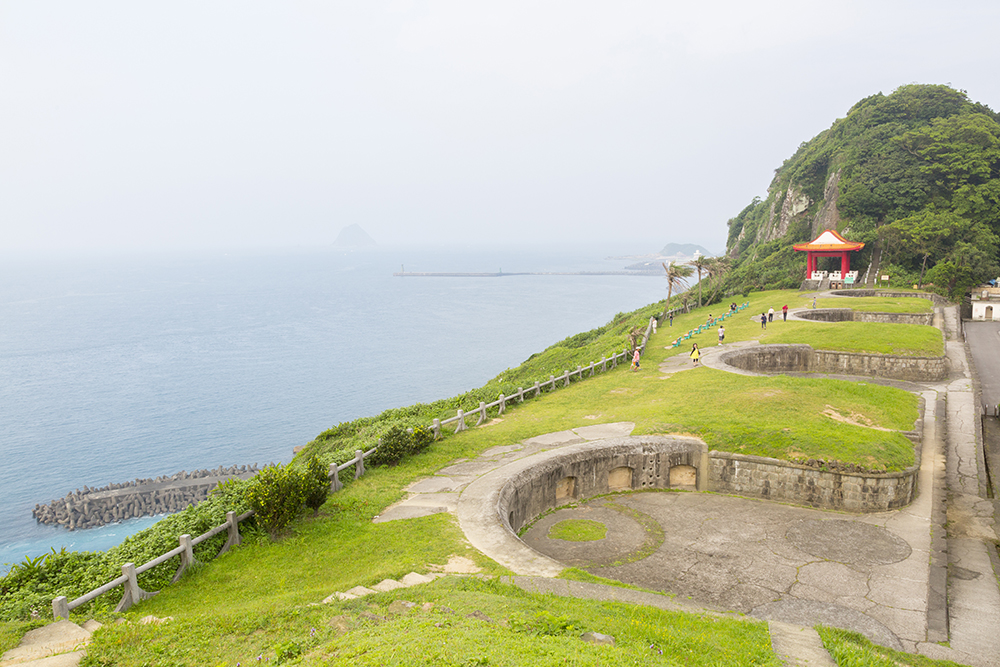
On the city’s east by the main harbor’s mouth is Heping Island, connected to the mainland by a short bridge. It has a park with curiously shaped rocks and an enclosed sea-swimming pool.
Heping Island Visitor Center (和平島遊客中心)
Add: No. 360, Ping 1st Rd., Zhongzheng Dist., Keelung City
(基隆市中正區平一路360號)
Tel: (02) 2463-5452
Hours: 08:00 ~ 18:00 (May ~ Oct. until 19:00)
Heping Island Park Admission Ticket
Nearby, Sheliao East Fort dates from the early years of Japanese rule, and walking there you’ll pass a mountain-like community of Amis-tribe members who migrated from further down the east coast in recent years. The Keelung City Indigenous Cultural Hall (75, Lane 116, Zhengbin Rd.), across from Heping Island, introduces the cultures of all Taiwan’s indigenous groups, with displays of material artifacts.
Add: No. 75, Ln. 116, Zhengbin Rd., Zhongzheng Dist., Keelung City
(基隆市中正區正濱路116巷75號)
Hours: 09:00 ~ 17:00 (closed on Monday, during the Lunar New Year period, and on national holidays)
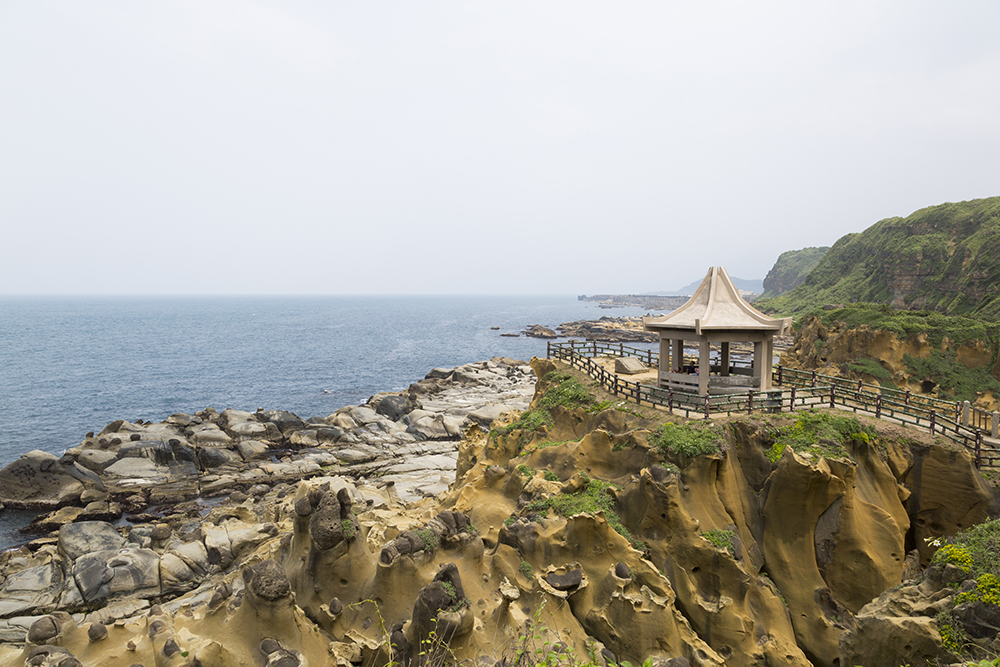
The Keelung Story House (181 Xinyi Rd., next door to the city hall, has introductions to the area’s history, ecology, people, and coal mining, as well as to Steve McQueen, who visited in 1966 for the filming of the Oscar-nominated “The Sand Pebbles.”
Keelung Walking Tour
Keelung Midnight Fish Market Adventure
Hotels in Keelung (booking.com)
Info about Keelung
Keelung Visitor Center (基隆旅遊服務中心)
Add: No. 5, Gangxi St., Ren’ai Dist., Keelung City
(基隆市仁愛區港西街1號)
Tel: (02) 2428-7664
Hours: 09:00~17:00
Also read:
Visit KEELUNG — Harbor City in the North
The NORTH COAST of Taiwan — from GUANYINSHAN to KEELUNG
NORTHEAST COAST Train Ride — from Fulong to Toucheng

